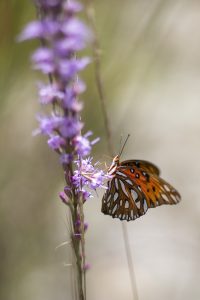Hello Avid Readers! Have you ever heard the term persistence as it relates to pesticides? This characteristic is very important as it relates to how long the pesticide “persists” or stays in the environment. There is some history associated with this term that makes it a perfect discussion for spring, hopefully not a silent one. If you think you know where I’m going here you are probably right, keep on reading to learn more about pesticide persistence.
Silent Spring
Yea, you guessed it right. I am starting this conversation off with Rachel Carson’s “Silent Spring”. Back in the day we used pesticides pretty indiscriminately. There weren’t specific guidelines for where, how much, and when pesticides could be applied. There was also very little as far as restrictions on contact with people and the environment. People started to notice changes in the environment, like fewer birds singing. Rachel Carson really brought this to the forefront of the public’s mind. One of the reasons pesticides were having a negative effect on the environment was their persistence. For more information on how “Silent Spring” impacted pesticide use look here.

Pesticide Persistence
Persistence is the pesticide’s ability to remain present and active in the environment in its original form before it breaks down. Persistence is described by the half-life of the compound. The half-life is the time it takes for the pesticide to be reduced to half its original value. So, the longer the half-life the longer it stays in the environment. Chemicals like DDT and some organochlorines have comparatively long half-lives and were negatively impacting the environment.

Is Pesticide Persistence Always Bad?
Sometimes it is desirable to have longer term activity depending on the pest management situation. For example, if there is a pest of peanut that is known in an area to affect the crop for 6 weeks every year. It may be easier for the applicator to do a single application of a product that will protect the crop for that period as opposed to several applications over the period each with the potential for human exposure, runoff, drift, or other undesirable consequences. It is important to be aware that persistent pesticides that come into contact with soil, lumber, or that reach water can have serious long term nontarget effects, so the costs and benefits should be weighed.
Another term you may have heard associated with this characteristic is residual. The residual is another term for how long the pesticide is active in the environment. This is an important term for agriculture. Consider those same peanuts from the previous example. If the USDA has put into place a “tolerance” or level of residual that is acceptable for food, the grower has to make sure they will be below that residual at harvest time.

What Can We Do?
Some of our current products are still persistent. It is important to ensure, for all pesticides, that they do not move offsite. This will ensure protection of nontagret species. It is also beneficial to understand how pesticides degrade or break down. They can break down by chemical degradation which is the breakdown of chemicals by nonliving organisms like water. Microbial action can also break down chemicals. This occurs when soil organisms, fungi, and bacteria degrade chemicals. Finally, sunlight, or photodegradation, may occur. Being aware of the level of residuals, persistence, and how pesticides break down can help applicators make the best decisions on products they use.
Please Subscribe to our blog!
We have a survey to learn what content you are interested in. Please take a few moments to take it here.
 1
1
